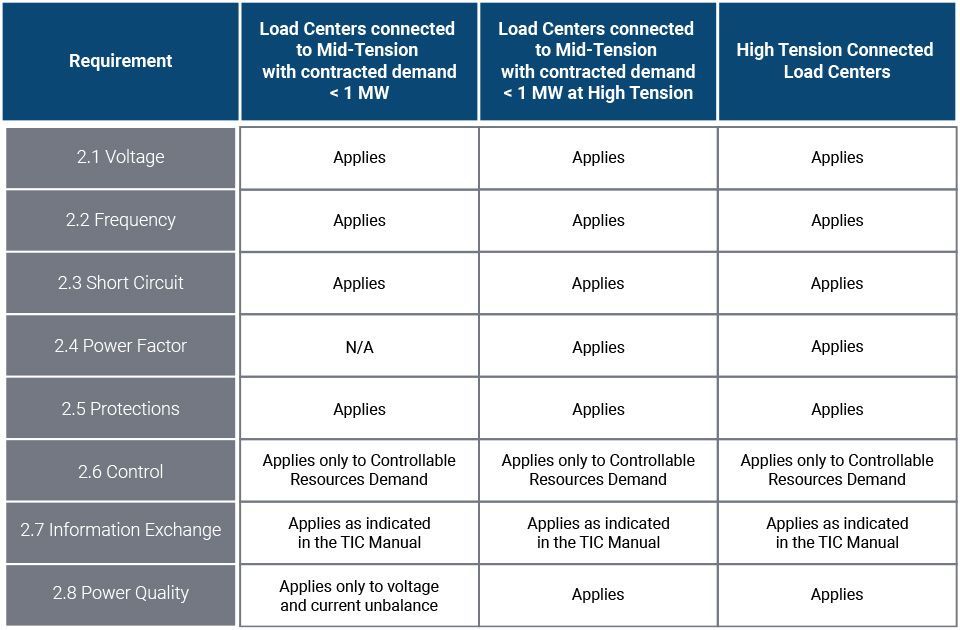Network Code
The Grid Code is a regulation published by the Energy Regulatory Commission (CRE) which establishes a series of required technical criteria that includes load centers connected in medium and high voltage (commercial and industrial).
Grid Code Compliance (Código de Red)
The Grid Code is a regulation published by the Energy Regulatory Commission (CRE) which establishes a series of required technical criteria that includes load centers connected in medium and high voltage (commercial and industrial).
The objective is to establish standards that ensure the efficiency, quality, reliability, continuity, security and sustainability of the supply in the National Electric System. These regulations are published in the Third and Fourth Sections of the Official Gazette of the Federation dated April 8, 2016. The regulations came into force on April 8, 2019.
Grid Code 2.0 was published on December 31, 2021 under Resolution No. RES/550/2021. Compliance with the Grid Code applies to both Basic Service users and Qualified Users in the Wholesale Electricity Market.

The Grid Code outlines important changes for medium voltage load centers with a contracted demand greater than or equal to 1 MW. Under the regulations, medium and high voltage users must maintain, for 95% of the time, an average power factor of at least 0.95. Not only are users required to maintain this average, but the power factor can only fall below 0.95 for up to 36 hours during the month. Additionally, for users connected at different voltage levels, the Grid Code establishes specific levels that users must maintain regarding:
- Harmonic distortions
- Current imbalances (medium voltage)
- Voltage fluctuations (better known as 'flicker').
The following table lists the applicable requirements for load centers according to their respective voltage level and contracted demand:

At the time of writing this publication, the CRE has not established the precise methodology in which it will implement the necessary penalties. However, the Electricity Industry Law in its article 165 does contemplate sanctions which vary depending on the severity of the non-compliance and range from 50 thousand to 200 thousand minimum wages or from 2% to 10% of the gross income received in the previous fiscal year. The magnitude of the non-compliance condition will be evaluated by the CRE with the technical support of the National Energy Control Center (CENACE), and will consider the impact associated with the number of affected users, time of interruption of the electrical supply, energy not supplied, manual shedding of uncontrollable load, among others.
The regulations establish that Medium Voltage load centers with a demand greater than or equal to 1 MW will have a transitional period of no more than two years to comply with sections 2.4 (Power Factor) and 2.8 (Power Quality), starting on December 31, 2021. Also, starting in 2026, the power factor requirement will increase from 0.97 to 1 95% of the time.
Enerlogix Solutions strongly encourages medium and high voltage users to conduct a Grid Code assessment. Enerlogix has developed partnerships with reputable vendors in this area who have the expertise to not only assess, alongside Enerlogix technical staff, but also install or replace the necessary equipment to bring users into compliance and eliminate the risk of penalty.
If you need assistance conducting a Grid Code assessment or managing a Grid Code compliance project, please call Enerlogix and request a proposal.



